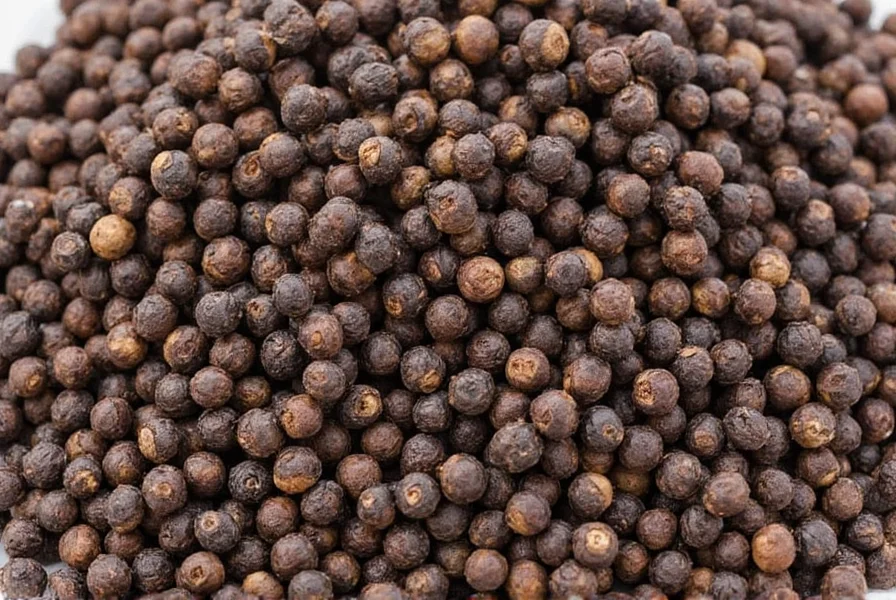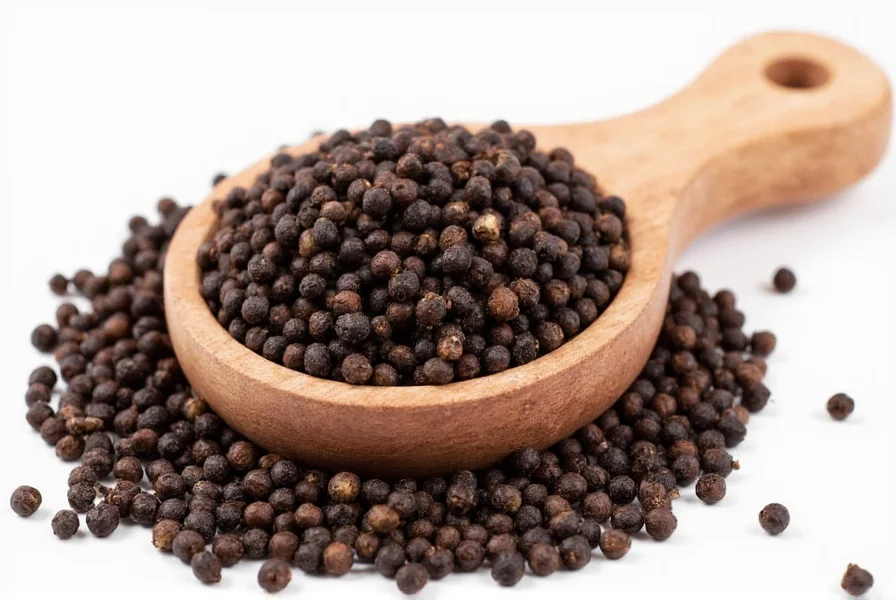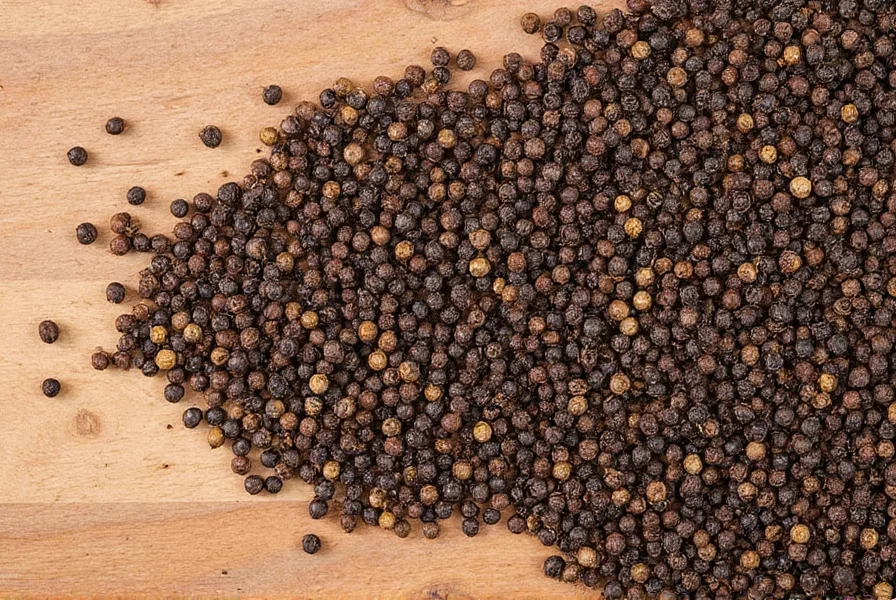For centuries, black pepper has been one of the world's most traded spices, earning the nickname "king of spices" and even serving as currency in some historical periods. Understanding its botanical origins and global journey reveals why this humble spice remains essential in kitchens worldwide.
The Botanical Source of Black Pepper
Black pepper (Piper nigrum) belongs to the Piperaceae family and grows as a perennial climbing vine. Unlike chili peppers (which belong to the Capsicum genus), black pepper comes from a completely different plant species. The vine produces small, green fruits that turn red when ripe—these are the peppercorns.
The distinctive black color develops during processing. Farmers harvest the peppercorns while still green or just beginning to ripen, then spread them in the sun to dry. During this process, the outer layer (pericarp) enzymatically darkens, creating the characteristic black peppercorns we recognize.

Historical Journey of Black Pepper
Black pepper's story begins in ancient India, where it was documented in Sanskrit texts dating back to 2000 BCE. Indian merchants controlled the spice trade for millennia, with Kerala's Malabar Coast serving as the primary source. Roman naturalist Pliny the Elder complained about the drain of Roman gold to India for pepper in the 1st century CE.
The spice's value drove European exploration. Vasco da Gama's 1498 voyage to India was largely motivated by the desire to bypass Arab and Venetian middlemen controlling the pepper trade. For centuries, black pepper was so valuable that it was often used as collateral or even currency—hence terms like "peppercorn rent" that persist in legal language today.
Modern Global Production
While India remains a significant producer, Vietnam has become the world's largest black pepper exporter, accounting for approximately 34% of global production. Other major producers include:
| Country | Global Production Share | Primary Growing Regions |
|---|---|---|
| Vietnam | 34% | Central Highlands, Southeast |
| India | 19% | Kerala, Karnataka, Tamil Nadu |
| Indonesia | 14% | Sumatra, Bangka Island |
| Brazil | 9% | Pará, Espírito Santo |
| Cameroon | 6% | Southwest Region |
Processing Methods Creating Different Pepper Varieties
Many people wonder where does black pepper come from compared to white pepper. The answer lies in processing:
- Black pepper: Sun-dried with outer layer intact
- White pepper: Soaked to remove outer layer before drying
- Green pepper: Preserved unripe berries
- Red pepper: Fully ripe berries preserved in brine
This explains why what plant does black pepper come from is the same as white pepper—they're simply different processing methods of the same Piper nigrum fruit. This botanical fact often surprises people who assume different pepper colors come from different plants.
Culinary and Medicinal Applications
Black pepper's pungency comes from piperine, which enhances both flavor and nutrient absorption. Modern research confirms traditional medicinal uses, showing potential benefits for digestion, inflammation reduction, and even cognitive function.
Chefs worldwide prize black pepper for its complex flavor profile that includes floral, woody, and citrus notes beyond simple heat. The best quality peppercorns come from single-origin sources and are freshly ground, as pre-ground pepper loses volatile compounds responsible for its distinctive aroma within days.

Understanding Pepper Quality Factors
When exploring black pepper production countries and quality differences, several factors affect quality:
- Harvest timing: Peppercorns picked at optimal ripeness develop better flavor
- Drying method: Traditional sun-drying creates more complex flavors than mechanical drying
- Storage conditions: Exposure to light and air degrades piperine content
- Varietal differences: Malabar Garbled Special Extra Bold (MGSEB) from India represents premium quality
Understanding these factors helps explain why premium black pepper can cost significantly more than commodity-grade product—a distinction that matters for both culinary results and potential health benefits.
Frequently Asked Questions
Is black pepper originally from India?
Yes, black pepper (Piper nigrum) is native to the Malabar Coast of South India, specifically the region now known as Kerala. Archaeological evidence shows pepper was used in India as early as 2000 BCE, and it became a major export commodity through ancient trade routes.
How is black pepper different from other peppers?
Black pepper comes from the Piper nigrum plant, while chili peppers belong to the Capsicum genus. Black pepper's heat comes from piperine, creating a different sensation than the capsaicin in chili peppers. White, green, and red pepper varieties all come from the same Piper nigrum plant but undergo different processing methods.
Why was black pepper so valuable historically?
Black pepper was valuable because it was difficult to cultivate outside its native tropical environment, had exceptional preservative qualities, and provided distinctive flavor in an era before refrigeration. Its scarcity in Europe made it worth its weight in gold at times, driving exploration and trade routes that shaped world history.
Can you grow black pepper outside tropical regions?
Piper nigrum requires specific tropical conditions—high humidity, consistent temperatures between 75-85°F (24-29°C), and protection from direct sunlight—to produce peppercorns. While you can grow the vine as a houseplant in temperate climates, it rarely flowers or fruits without replicating its native equatorial environment.
Does black pepper have health benefits?
Yes, black pepper contains piperine, which has demonstrated antioxidant, anti-inflammatory, and digestive benefits. Research shows piperine enhances nutrient absorption, particularly of curcumin in turmeric. However, these benefits are most pronounced with freshly ground pepper, as piperine degrades over time in pre-ground products.











 浙公网安备
33010002000092号
浙公网安备
33010002000092号 浙B2-20120091-4
浙B2-20120091-4